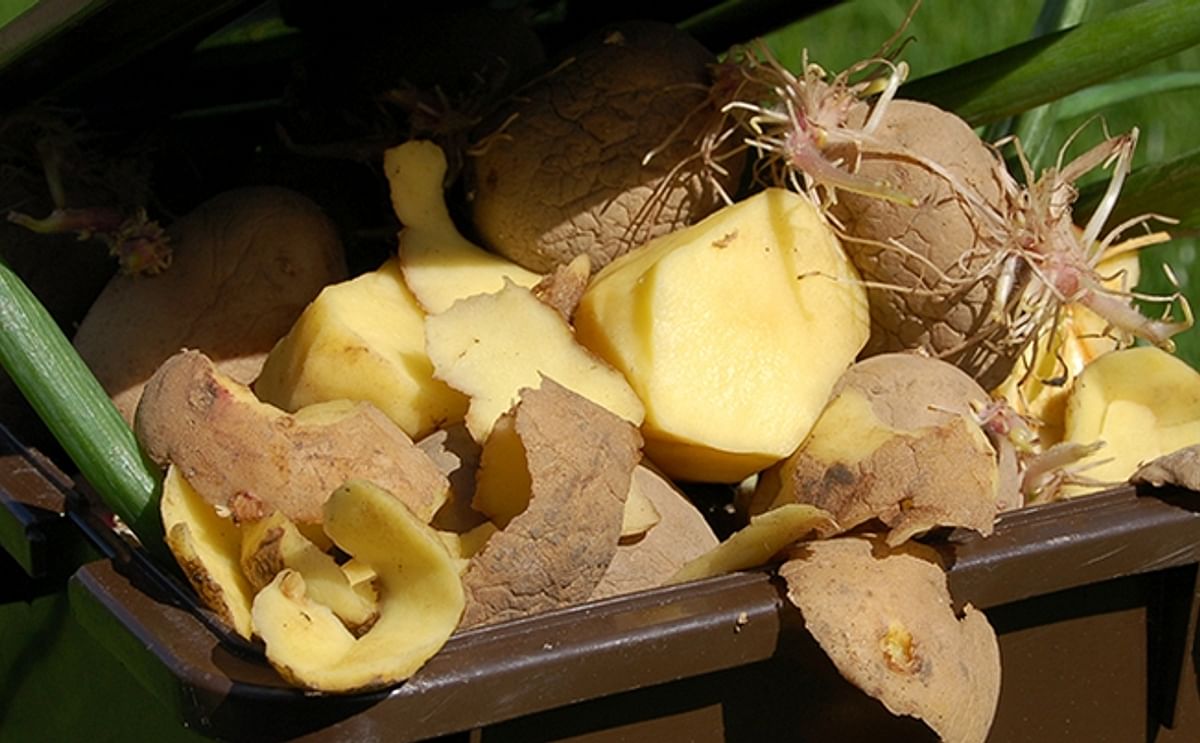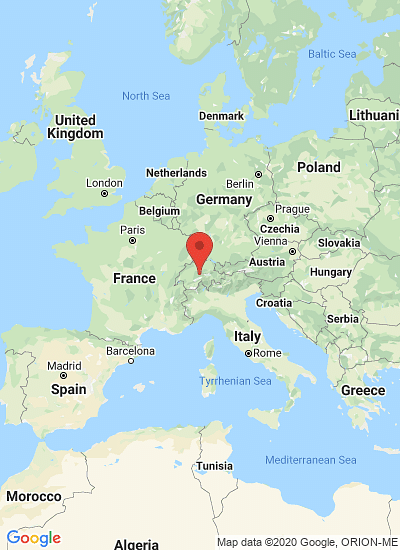Private households are responsible for 15 percent of the total loss in the potato supply chain. (Photo: Christian Willersinn / Agroscope / ETH Zürich)
Potato waste from farm to fork quantified in Swiss study

Food waste is today’s hot topic. In fact, according to scientific surveys in Switzerland, 300 kg of perfectly good food ends up in the bin per person each year. However, this number encompasses the entire shopping basket, from yoghurt to drinkable leftover wine and two-day-old bread.
From this basket, scientists at the research institute Agroscope and ETH Zurich have now identified one product that is discarded disproportionately often: the potato.
A new study on this topic has just been presented by ETH doctoral student Christian Willersinn, who works in the group led by Michael Siegrist, Professor of Consumer Behaviour, together with colleagues from Agroscope. The study breaks down the losses of this staple food along the entire supply chain. “With this study, we aim to deepen the discussion relating to food waste by looking at a single product,” says lead author Willersinn. The study appeared in the journal Waste Management.
Until now, precise figures on potato waste were only available from England, where around two thirds of potatoes end up in the bin. However, Willersinn says that these figures cannot be compared with the situation in Switzerland.
For the Swiss study, the researchers from Agroscope and ETH examined the losses that occur at the producer, wholesaler, retailer, processor and consumer level. The researchers recorded the quantities both of table potatoes and of processing potatoes, which are processed into chips and crisps. They also compared the losses that occur in organically and non-organically produced potatoes in both categories.
To ascertain the quantities lost at the producer stage, Willersinn and his colleagues used data from more than 220,000 quality assessments of individual tubers. The researchers also surveyed wholesalers and retailers in order to obtain the most accurate quantitative information possible at that level. Furthermore, they carried out a written survey of 2,000 households to collect data on private potato waste. In addition to this, 87 people kept a diary for 30 days, in which they recorded their exact potato consumption and exactly how much of the originally purchased quantity, including preparation waste, ended up in their bins.
One in two potatoes thrown out
“Overall, potato waste is also very high in Switzerland,” says the ETH doctoral student in light of the results of his analyses. From the field to the home, 53 percent of conventionally produced table potatoes are wasted, and this figure rises to 55 percent for those produced organically. For processing potatoes, the figures are lower: 41 percent of organic potatoes are discarded, compared to 46 percent of those from conventional production. The higher waste proportion for conventionally farmed processing potatoes is connected to the overproduction of this crop, which barely ever occurs with organic farming.
Waste is greater for organically farmed table potatoes because these fail to satisfy the high quality standards more often than conventional ones. “After all, consumers have the same expectations of quality and appearance for organic production as they do for conventional.”
Farmers discard a quarter
Losses occur at all stages of the supply chain: up to a quarter of the table potato harvest falls by the wayside even at the producer stage. A further 12 to 24 percent are rejected by wholesalers during sorting. Just one to three percent fall between the cracks at retailers, and a further 15 percent are wasted in households.
Although private households account for a relatively small proportion of potato waste, Willersinn says their contribution has the most impact: in private homes, most of the unused potatoes end up in the bin bag or on the compost heap. Producers, traders and processors, on the other hand, recycle the vast majority of waste into animal fodder or, to a lesser extent, into feedstock for biogas plants.
Quality standards and specifications
According to Willersinn, the blame lies primarily with consumers’ high quality standards, especially when it comes to fresh potatoes. This accounts for two thirds of the waste in respect of fresh potatoes from conventional farming. For organic potatoes, this figure rises to three quarters.
Consumer health protection also leads to waste: producers reject one in three potatoes after harvest because they are rotten or green and could therefore be harmful to health. Wireworms, i.e. the larvae of click beetles, have also eaten holes into many potatoes, although they would still be edible. Willersinn therefore wonders “if a potato is full of insect holes, is it still acceptable to the consumer?” Likewise, misshapen or deformed potatoes would be edible but, just like ‘worm-eaten’ potatoes, are fed to animals for aesthetic reasons.
New varieties, different habits
In order to reduce potato waste, therefore, the researcher suggests taking action on the producer side first and foremost; for example, by using suitable cultivation methods such as crop rotation to minimise infestation, by protecting plants against wireworms, and by breeding new, more-robust varieties of potatoes. He is certain: “These measures could improve quality and therefore result in less waste”.

Vegetable waste from households is double that from the processing factories. (Photo: Christian Willersinn / Agroscope / ETH Zurich)
However, he says that wholesalers and retailers take a critical view of scabby potatoes, as scab can be transmitted to healthy specimens. “This would mean that waste would occur at the end-consumer stage, instead of at the producer and trader level, because consumers have different quality expectations,” Willersinn adds emphatically. He says the eco-balance is at its worst when consumers throw potatoes in the bin. “Losses at the end of the chain are the worst because, at this stage, the most energy has been put into the product. The most sensible thing is therefore to minimise household waste,” Willersinn emphasises. He adds that a corresponding study is currently in progress.
Putting the onus on consumers
The ETH doctoral student and Agroscope staff member places the principal onus on consumers: they need to reconsider their preferences and their buying and eating habits. “However, habits are very difficult to change,” he emphasises, noting that, according to the household survey, older people throw out less than young people. Willersinn can only speculate on the reasons for this. It is conceivable to him that older people know how to store potatoes and that young people, on the other hand, lack some of this knowledge.
Reference
Willersinn C, Mack G, Mouron P, Keiser A, Siegrist M. Quantity and quality of food losses along the Swiss potato supply chain: Stepwise investigation and the influence of quality standards on losses. Waste Management. Available online 2 September 2015.DOI: 10.1016/j.wasman.2015.08.033










